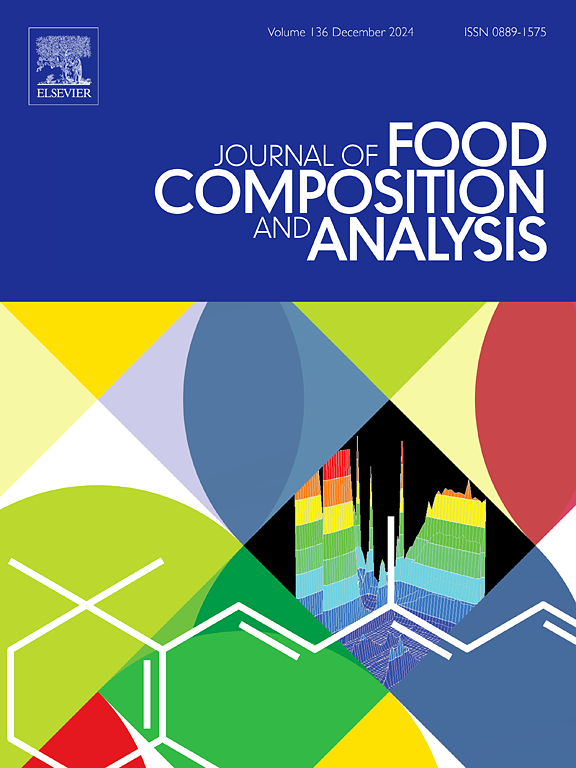Structural characterization of polymeric polyphenols from different parts of Diospyros kaki L. cv. Mopan persimmons
IF 4
2区 农林科学
Q2 CHEMISTRY, APPLIED
引用次数: 0
Abstract
Polymeric polyphenols in different parts (fruits, leaves and calyces) of persimmon (Diospyros kaki L. cv. Mopan) were characterized via four different degradation methods, followed by HPLC/UPLC-UV/vis, HPLC/UPLC-Q-Exactive-Orbitrap/MS and UPLC-QqQ/MS to obtain comprehensive structural constituent unit information of polymeric polyphenols. The results indicated that persimmon polymeric polyphenols not only consisted of proanthocyanidins as terminal and extension units, but also contained anthocyanidins, flavonols and phenolic acids as terminal units. Among these different fragments detected, (−)-gallocatechin, (−)-gallocatechin-3-O-gallate, (+)-catechin and (+)-catechin-3-O-gallate as extension units and (−)-epicatechin, (−)-gallocatechin, (−)-epigallocatechin, eight phenolic acids and four flavonols as terminal units were found for the first time in persimmon polymeric polyphenols. The molar percentages of constitutive units of persimmon polymeric polyphenols varied considerably. Compared to polymeric polyphenols in persimmon fruits and calyces, anthocyanidins, flavonols and phenolic acid units with the highest molar percentages were found in polymeric polyphenols in persimmon leaves. In contrast, the mean polymerization degrees of polymeric polyphenols in persimmon fruits, leaves and calyces were 26.45 ± 0.43, 6.23 ± 0.08 and 11.60 ± 0.07, respectively. These findings provide, for the first time, comprehensive structural information on persimmon polymeric polyphenols, and offer valuable insights into their composition and characteristics.
求助全文
约1分钟内获得全文
求助全文
来源期刊

Journal of Food Composition and Analysis
工程技术-食品科技
CiteScore
6.20
自引率
11.60%
发文量
601
审稿时长
53 days
期刊介绍:
The Journal of Food Composition and Analysis publishes manuscripts on scientific aspects of data on the chemical composition of human foods, with particular emphasis on actual data on composition of foods; analytical methods; studies on the manipulation, storage, distribution and use of food composition data; and studies on the statistics, use and distribution of such data and data systems. The Journal''s basis is nutrient composition, with increasing emphasis on bioactive non-nutrient and anti-nutrient components. Papers must provide sufficient description of the food samples, analytical methods, quality control procedures and statistical treatments of the data to permit the end users of the food composition data to evaluate the appropriateness of such data in their projects.
The Journal does not publish papers on: microbiological compounds; sensory quality; aromatics/volatiles in food and wine; essential oils; organoleptic characteristics of food; physical properties; or clinical papers and pharmacology-related papers.
 求助内容:
求助内容: 应助结果提醒方式:
应助结果提醒方式:


